Affiliate disclosure: This post may contain affiliate links. Please see our Privacy Policy.
Freeze-drying tomatoes is an exceptional way to preserve these colorful summer fruits. Freeze-dried tomatoes last decades and are wonderful for adding to sandwiches, making tomato sauce or eating like veggie chips!
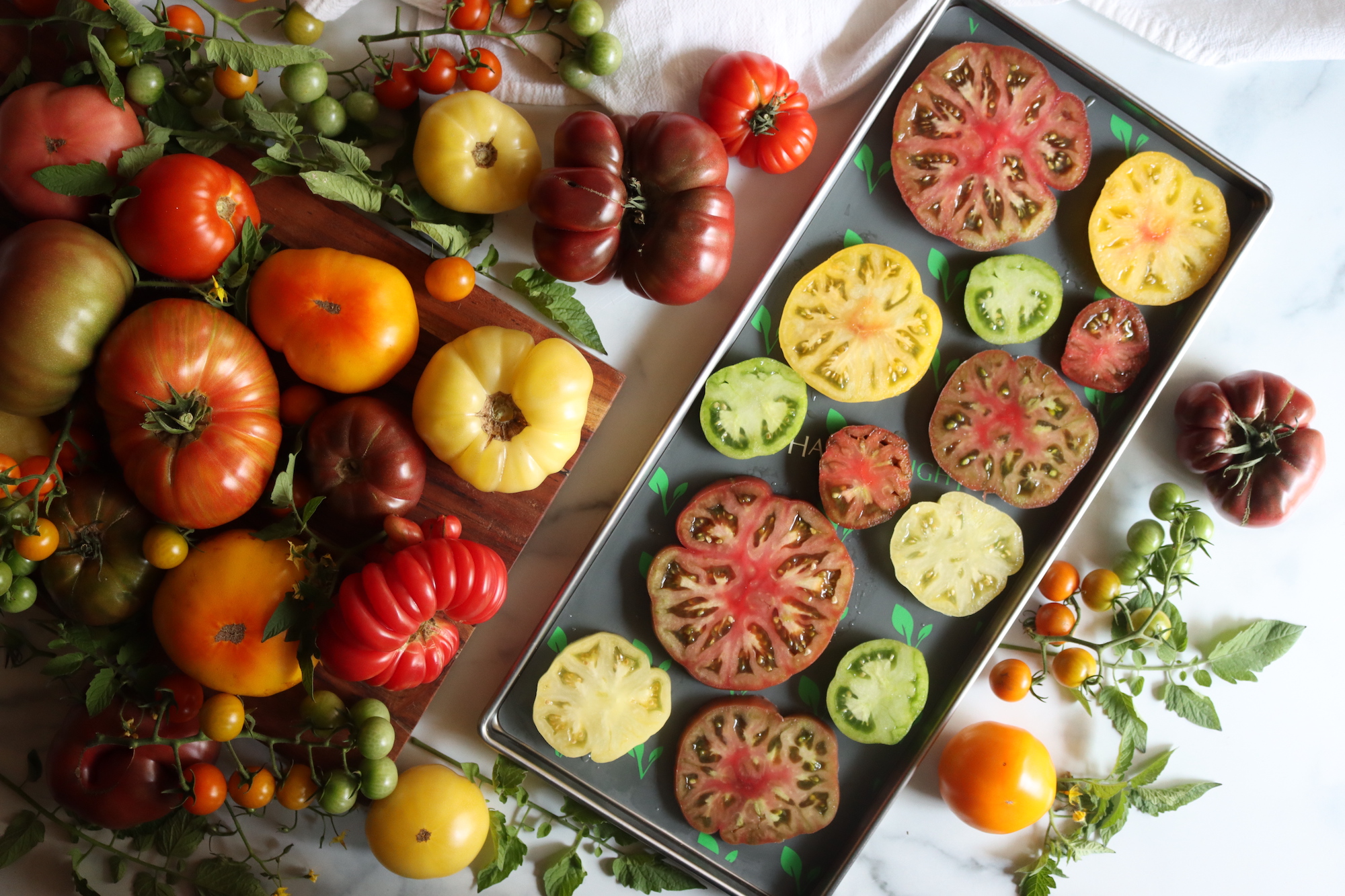
Table of Contents
- What’s the Difference Between Freeze Dried Tomatoes and Dehydrated Tomatoes?
- Best Tomatoes to Freeze Dry
- Freeze Dried Tomatoes Yield
- Supplies Needed
- Preparing Tomatoes for Freeze Drying
- How to Freeze Dry Tomatoes
- Reconstituting Freeze Dried Tomatoes
- How to Store Freeze Dried Tomatoes
- Ways to Use Freeze Dried Tomatoes
- Freeze Dried Tomatoes Recipe
- Freeze Drying Guides
Freeze-drying is one of the best preservation methods for tomatoes. While certain tomatoes are better than others for canning, you can freeze-dry any type of tomato.
You can freeze-dry heirlooms, cherry tomatoes or green tomatoes. I always have several varieties of tomatoes growing in my backyard since tomatoes are so easy to grow from seed.
Freeze-dried tomatoes last much longer than other preservation methods. While home-canned tomatoes keep at peak quality for 12 to 18 months, freeze-dried ones can last for decades. Freeze-drying also does a better job of preserving the nutritional content of food than any other preservation method.
Tomatoes actually contain several nutrients including Vitamin A and C, lycopene (an antioxidant), calcium, potassium and folate. While you can home-can everything from tomato paste to tomato juice, freeze-drying will do the most to keep all these vitamins and minerals intact.
With a home freeze dryer, you don’t have to waste a whole day canning the onslaught of summer tomatoes before they go bad. You can simply spend 30 minutes washing and slicing them to pop into this little appliance and let it do all the work instead.
The same is true with other summer produce, and freeze dried peppers and freeze dried strawberries are just as simple.
If you haven’t already, I suggest you start by reading my beginner’s guide to freeze-drying at home to learn more about the freeze-drying process. You will need a home freeze dryer to get the job done, and I use a model from Harvest Right, which is efficient and easy to use.
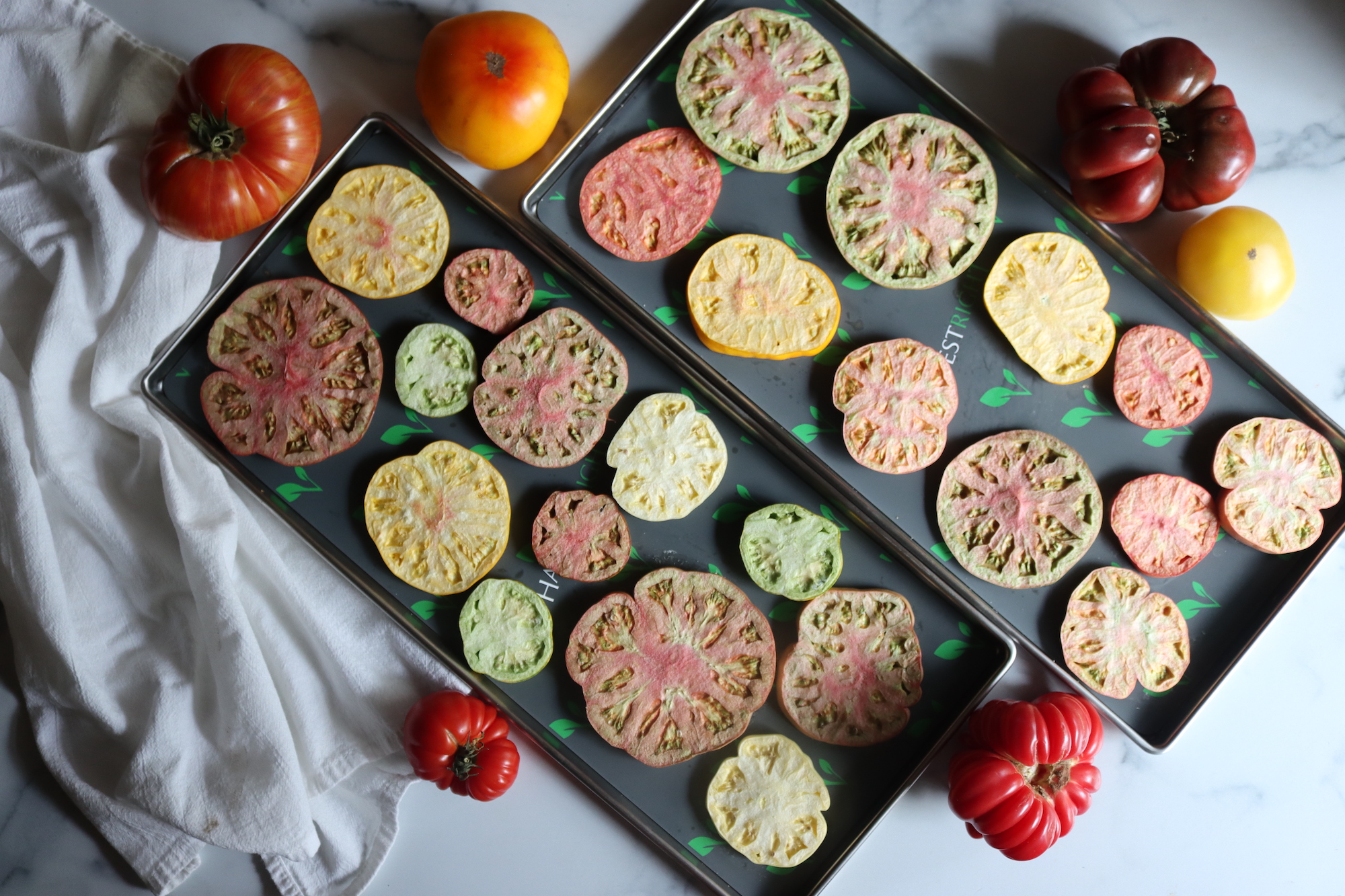
What’s the Difference Between Freeze Dried Tomatoes and Dehydrated Tomatoes?
Freeze drying and dehydrating are completely different processes, and they give you a very different tomato in the end.
Dehydration using heat to dry tomatoes which affects the taste and aroma of your tomatoes. These higher temps can also give tomatoes a cooked flavor. Dehydrated tomatoes shrink and become rubbery, and they won’t rehydrate back to their original shape, size or texture.
Freeze-drying nearly stops time, preserving all of the flavor and aroma of your fresh tomatoes. It removes the water content through a process known as sublimation, which is cool instead of hot. As a result, the tomatoes taste fresh, not cooked, and rehydrate beautifully.
Shelf life is always higher with freeze drying. While dehydration removes 80 to 90% of a food’s water content, freeze-drying removes 99%. For this reason, dehydrated tomatoes may last just a few years, but freeze-dried ones can last for decades.
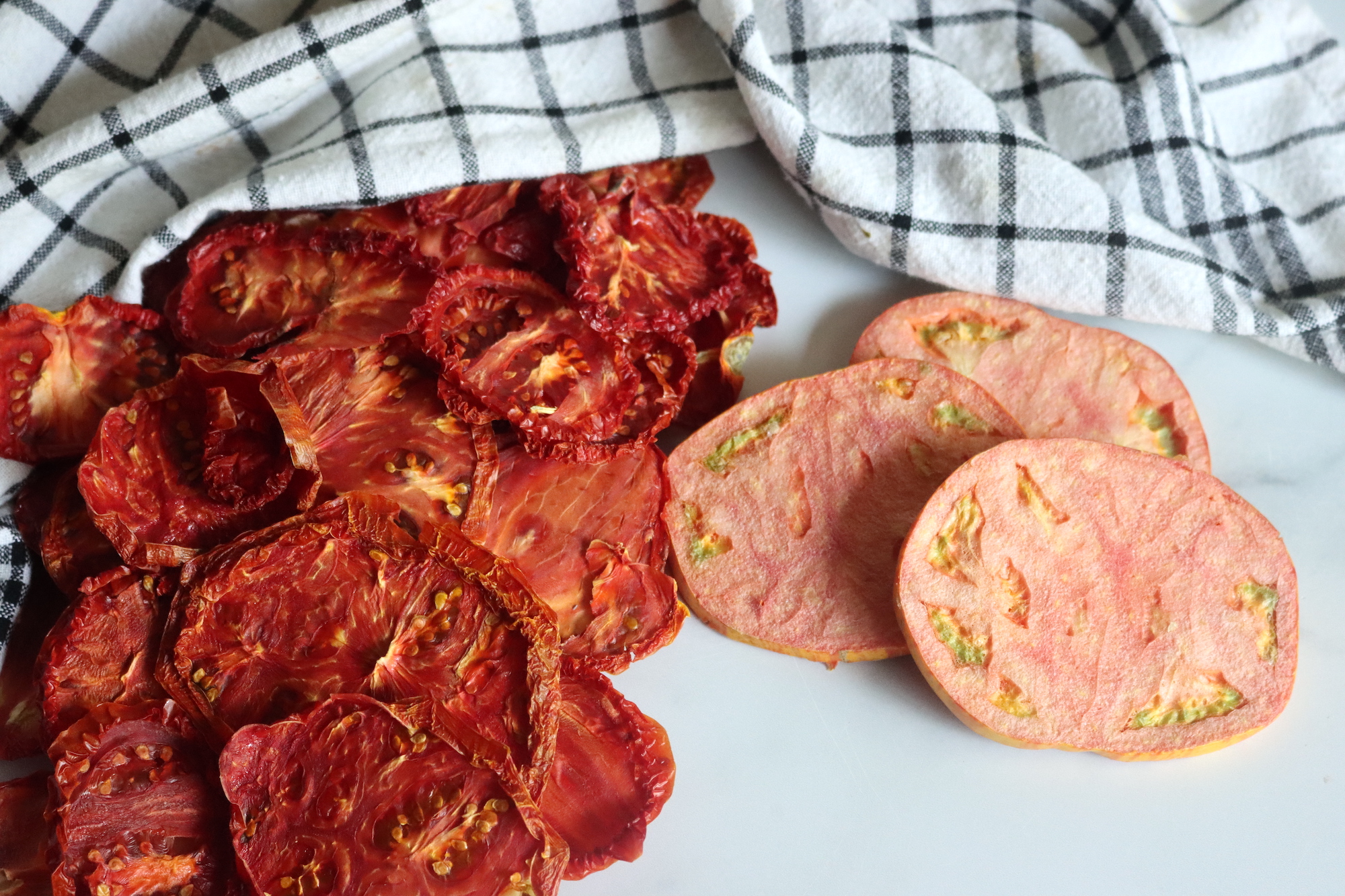
Best Tomatoes to Freeze Dry
To get quality freeze-dried tomatoes, you must start with quality fresh tomatoes. If your tomatoes are underripe and flavorless, freeze-drying won’t improve them. Freeze-drying is like stopping time; the way your food goes in is the way it will come out. The flavors will just become more concentrated due to the removal of water.
Start with the highest quality tomatoes, picking them at the peak of ripeness. Ripe tomatoes should be heavy and fragrant and those with torn skin or rot should be avoided.
If you’re purchasing tomatoes instead of picking your own, try to shop locally at a farmers market. Grocery stores tend to place a priority on shelf life rather than flavor when it comes to their produce. Local farmers are more likely to have fresher stock and to grow organic tomatoes without pesticides as well.
As always, be sure to taste-test a few tomatoes before freeze-drying. The exact same flavors and aromas should be present in your freeze-dried end product as in these fresh ones.
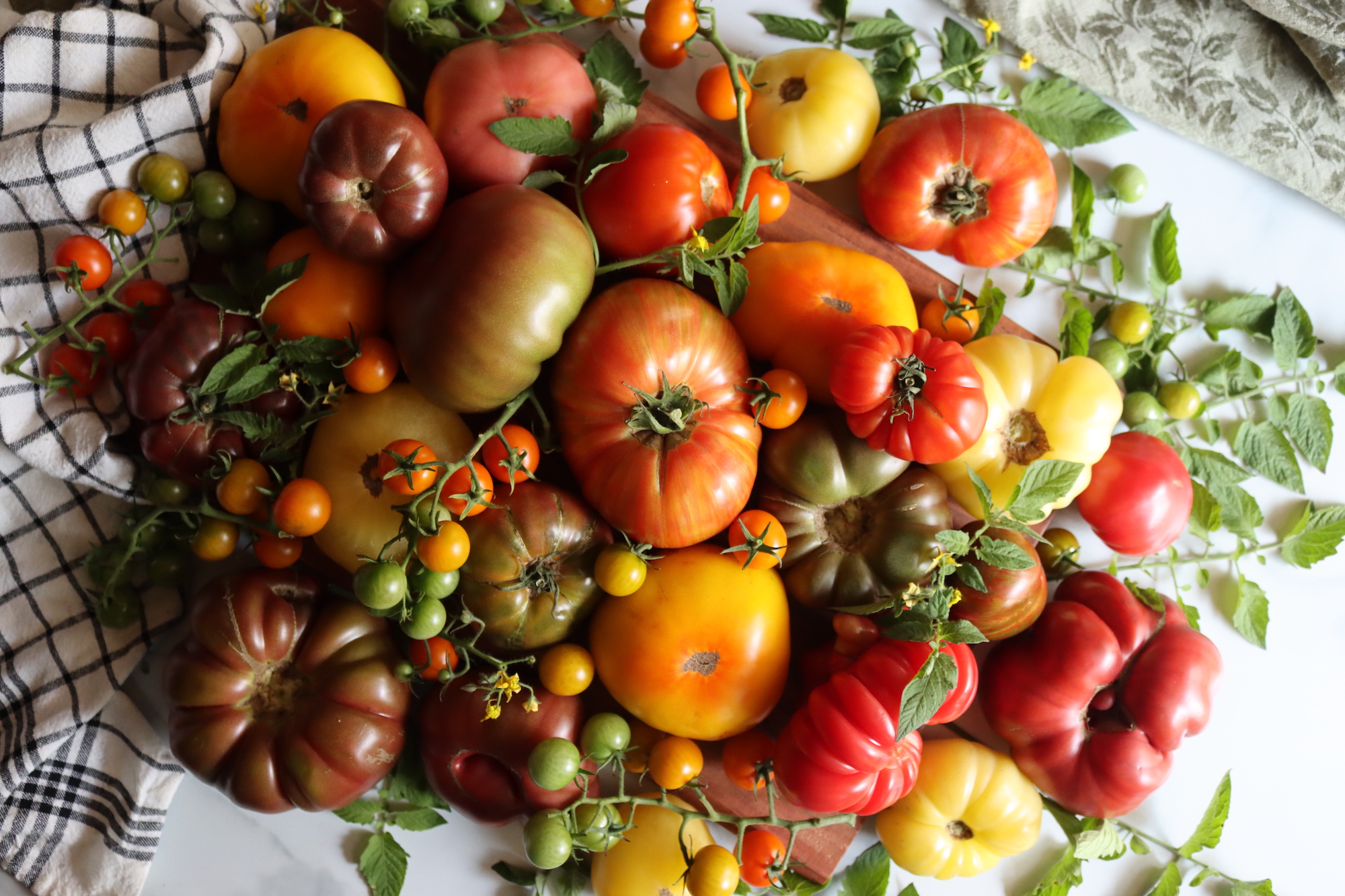
Freeze Dried Tomatoes Yield
A pound of fresh tomatoes will yield somewhere between 2 to 3 cups depending on how it is processed. As a general measurement, one pound of fresh tomatoes will come out to 3 cups if sliced, 2-½ cups when chopped or 2 cups if pureed.
These amounts won’t change too much after freeze-drying, as freeze-drying doesn’t reduce the size of your food so much as the weight.
But, how many tomatoes are in a pound? That depends on the type of tomato, of course. One pound is typically equal to:
- 3 medium globe tomatoes
- 4 large Roma tomatoes
- 8 small Roma tomatoes
- 8 small plum tomatoes
- 15 to 20 cherry tomatoes
How many tomatoes you can freeze-dry in a batch depends on the size of the machine, how you plan to prepare the tomatoes (halved, sliced or pureed), and how tightly you want to pack the trays. A little overlap is fine, but the contents of the trays should never be higher than the rims.
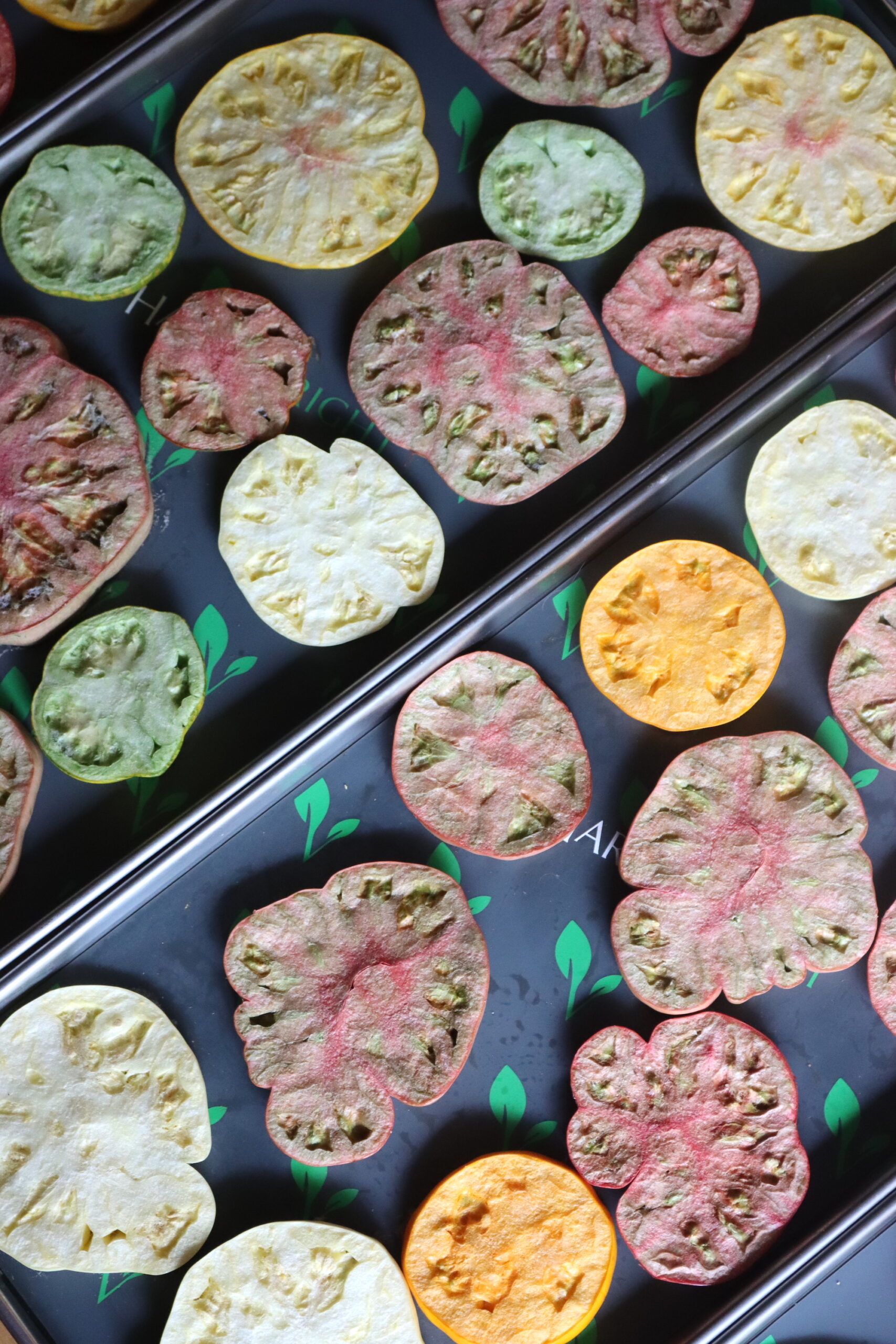
My particular freeze dryer is an older model — it’s a large dryer but only contains 5 trays. (The newer models of this size have 6 trays.) My freeze dryer is graded for 15 to 20 pounds of food in a batch across its 5 trays, which comes out to about 3 to 4 pounds of food per tray if I pack it tightly.
Nowadays, I tend to load each tray with 2 to 3 pounds instead for a shorter drying time and better-looking end product.
All freeze-drying machines are rated for a certain amount of food. These are the average yields for each according to machine size:
- Small Freeze Dryer: Processes 6 to 10 pounds of food per batch, across 4 trays (434 square inches of drying space).
- Medium Freeze Dryer: Processes 10 to 15 pounds of food per batch, across 5 trays (675 square inches of drying space).
- Large Freeze Dryer: Processes 18 to 27 pounds of food per batch, across 6 trays (1107 square inches of drying space).
- Extra Large Freeze Dryer: Processes 40 to 50 pounds of food per batch, across 7 trays (2257 square inches of drying space).
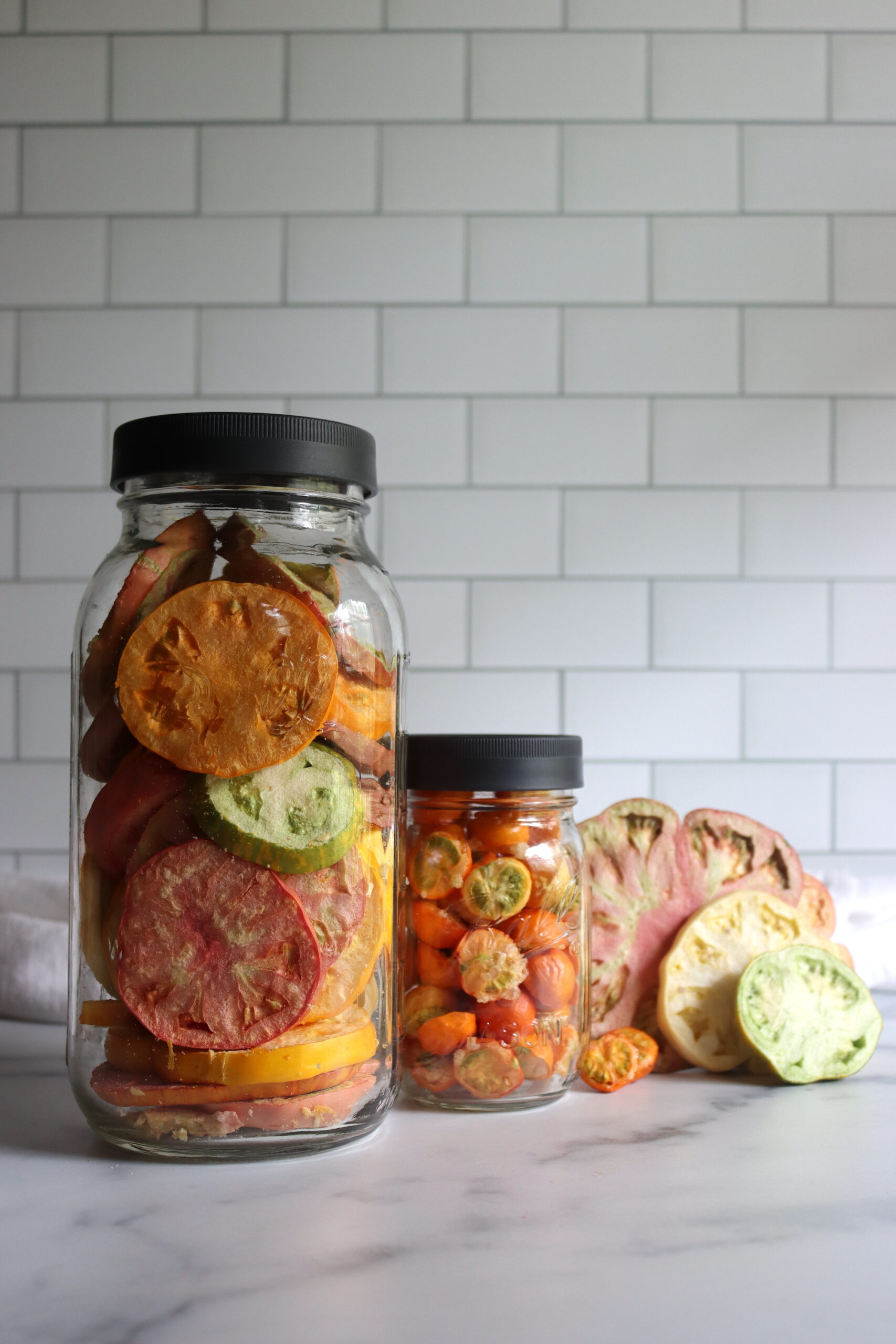
Supplies Needed
To freeze-dry tomatoes at home, you will need:
- Tomatoes – Either fresh or pre-frozen.
- Home Freeze Dryer – In between two sizes? Opt for the larger model. Larger freeze dryers cost less to run per pound of food making them more efficient.
- Cutting Board and Knife – Necessary for cutting tomatoes into even ¼ inch slices. (Uniform slices will dry the best.) Other options include dicing tomatoes, halving smaller tomatoes or leaving them whole.
- Silicone Tray Liners (or Parchment Paper) – Wet and juicy tomatoes will stick to your trays. Hasten cleanup by lining them with parchment paper or silicone liners. The end product will look prettier too.
- Colander and Towels – Tomatoes should be washed before freeze-drying and dried well. Excess water extends the drying time.
- Mason Jars (Or Airtight Storage Containers) – Anything that’s being used within the year, we store in mason jars for easy access. If aiming to store tomatoes for an extended time, packing tomatoes in Mylar bags with oxygen absorbers is crucial.
- Vacuum Sealer (Optional) – Although optional, a vacuum sealer helps to pack food into mason jars with a negligible amount of air for a longer shelf life.
- Label Tape and a Pen – Label your freeze-dried packages with tape and pens! You may think you’ll remember what it is in a month (and how old it is), but you probably won’t, especially if they’re in mylar bags. Even with mason jars, dates are important!
Preparing Tomatoes for Freeze Drying
To prepare tomatoes for freeze-drying, all that needs to be done is to wash and dry the fruit before slicing. Be sure to remove the green stems and discard any off-colored bits as well.
Wash tomatoes, then dry with a towel to remove excess moisture. Next, slice the tomatoes any way you wish. Smaller cherry tomatoes can be halved or left whole. Large tomatoes can be cut into ¼ inch thick slices or diced into cubes.
Sometimes, I’ll use my Breville Slice and Dice food processor to cube fruits and veggies into little pieces in seconds. My food processor cubes items into 8mm (⅓ inch), 12mm (½ inch), or 16mm (⅔ inch) pieces in an instant — a handy tool in preservation.
You can even blend up tomatoes and pour the puree directly on the trays to make tomato powder. You’ll be able to pack more tomatoes into the freeze dryer this way, however, powder is less versatile than regular freeze-dried tomatoes.
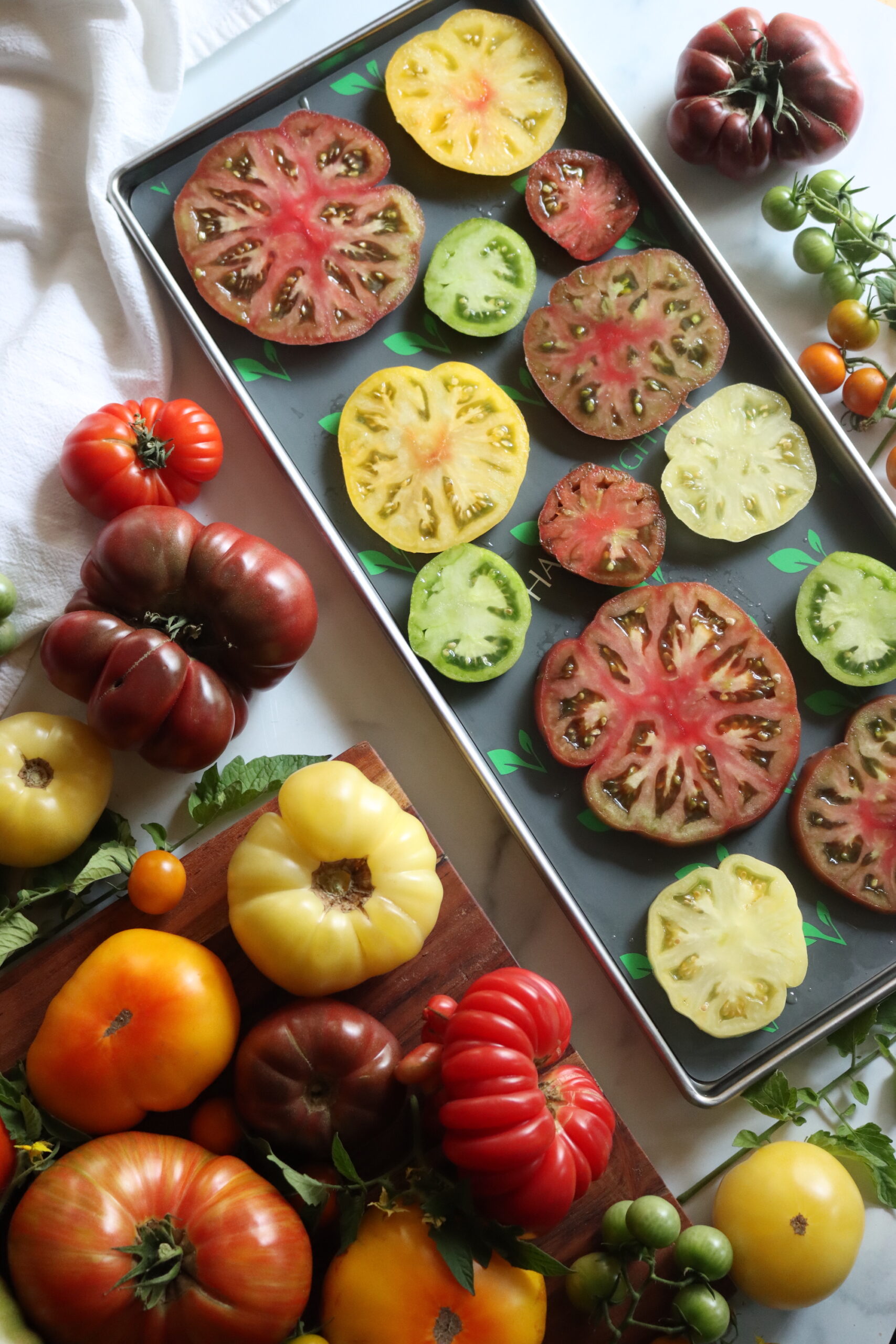
How to Freeze Dry Tomatoes
After washing, destemming and slicing your tomatoes, the freeze-drying process is pretty straightforward.
Start by turning on your freeze dryer and setting it to pre-chill for 30 minutes before adding in your tomatoes. (Some models will also ask you to also input whether the food is frozen or not, but the newer models don’t as they can detect this for you.)
While you wait for the machine to pre-chill, you can line your trays with silicone liners or parchment paper. If placing sliced tomatoes on the trays, do so in a single layer.
If loading your trays with pureed tomatoes, wait until your machine has pre-chilled, then load the trays partially into the freeze dryer and pour the puree onto each tray one by one, sliding the tray in the rest of the way once full. This is much easier than filling trays and sloshing them as you try to load them into your freeze dryer.
For a faster freeze-drying time, you can pre-freeze your tomatoes to shorten the time needed to freeze them in the appliance. If you have a deep freezer, you can freeze the tomatoes directly on your freeze-drying trays. Lids are available to make for easy stacking in large freezers.
Once your freezer dryer has pre-chilled, load the trays in and press “continue.”
Your freeze dryer will do all the work from here. All you need do is check when the cycle ends to see if your tomatoes are dry enough.
Most of the time, it will take a little over 20 hours to freeze-dry tomatoes, although several conditions can affect this timing.
The main elements that affect freeze-drying time are:
Pre-Freezing: If you pre-freeze tomatoes in your own freezer, this will cut some time off as the machine won’t need to freeze your tomatoes.
Piece Size: Thick tomato slices and whole tomatoes will take longer to freeze-dry than thinner tomato slices and smaller pieces.
Moisture in the Fruit: Extra juicy tomatoes will take longer to dry because they have more moisture that needs to be extracted. Additionally, commercial fruits tend to have less moisture in them than home-grown varieties.
Freeze-dried tomatoes should taste exactly like fresh tomatoes, only without the moisture content (as long as you started with fresh tomatoes, that is). Freeze-drying won’t alter the flavor of your tomatoes, so if you sliced up and processed ripe and fresh tomatoes, fresh and ripe is how they should taste once dried!
If anything, the favors will only become more concentrated due to the removal of the water. To get the most flavorful freeze-dried tomatoes, always select the best quality tomatoes to freeze-dry. After all, there’s no point in preserving something that doesn’t taste good!
When properly packed and stored, freeze-dried tomatoes can last upwards of 3 decades (30 years). To do so, you will need to store freeze-dried food in mylar pouches with oxygen absorbers.
Freeze-dried tomatoes kept in a tightly-sealed mason jar will keep at the best condition for 1 to 2 years while sealed. Once opened, the contents will begin to absorb moisture from the ambient humidity in the room. Multiple openings will mean quicker spoilage.
When tomatoes are appropriately freeze-dried, they should feel completely dry and easily snap in half.
A great way to test if your batch is fully freeze-dried is to take one of the largest and thickest pieces and break it in half. There should be no moisture present and the tomato should be firm.
If you do notice any moisture, you’ll need to extend the drying cycle for a few more hours until the tomatoes are devoid of all moisture.
Reconstituting Freeze Dried Tomatoes
Many people choose to use freeze-dried tomatoes in their dry form. Many eat tomato slices as chips or slip them into sandwiches for some tomato-flavored crunch.
Some also blend the dried tomatoes into a tomato powder for adding to smoothies or to rehydrate with a small amount of water to make tomato paste.
If you would like to rehydrate tomatoes for a dish, you can do so by placing them in a dish and covering them with water. Let them rehydrate for 20 minutes or so, drain off the excess water and then use as needed.
Just remember, the texture of reconstituted tomatoes will not be the same as it is with fresh-picked tomatoes. They will be slightly mushier. For this reason, reconstituted tomatoes are best cooked or blended up. You can also reconstitute them with salad dressing or olive oil for a more flavorful result.
How to Store Freeze Dried Tomatoes
Storing freeze-dried foods in mason jars may look appealing, but this isn’t the best method if you’re planning on stockpiling foods for an extended period of time.
If you plan on using freeze-dried tomatoes within the year, mason jars with tight-fitting lids will work fine. Any longer, and you’ll want to pack freeze-dried foods into mylar pouches with oxygen absorbers.
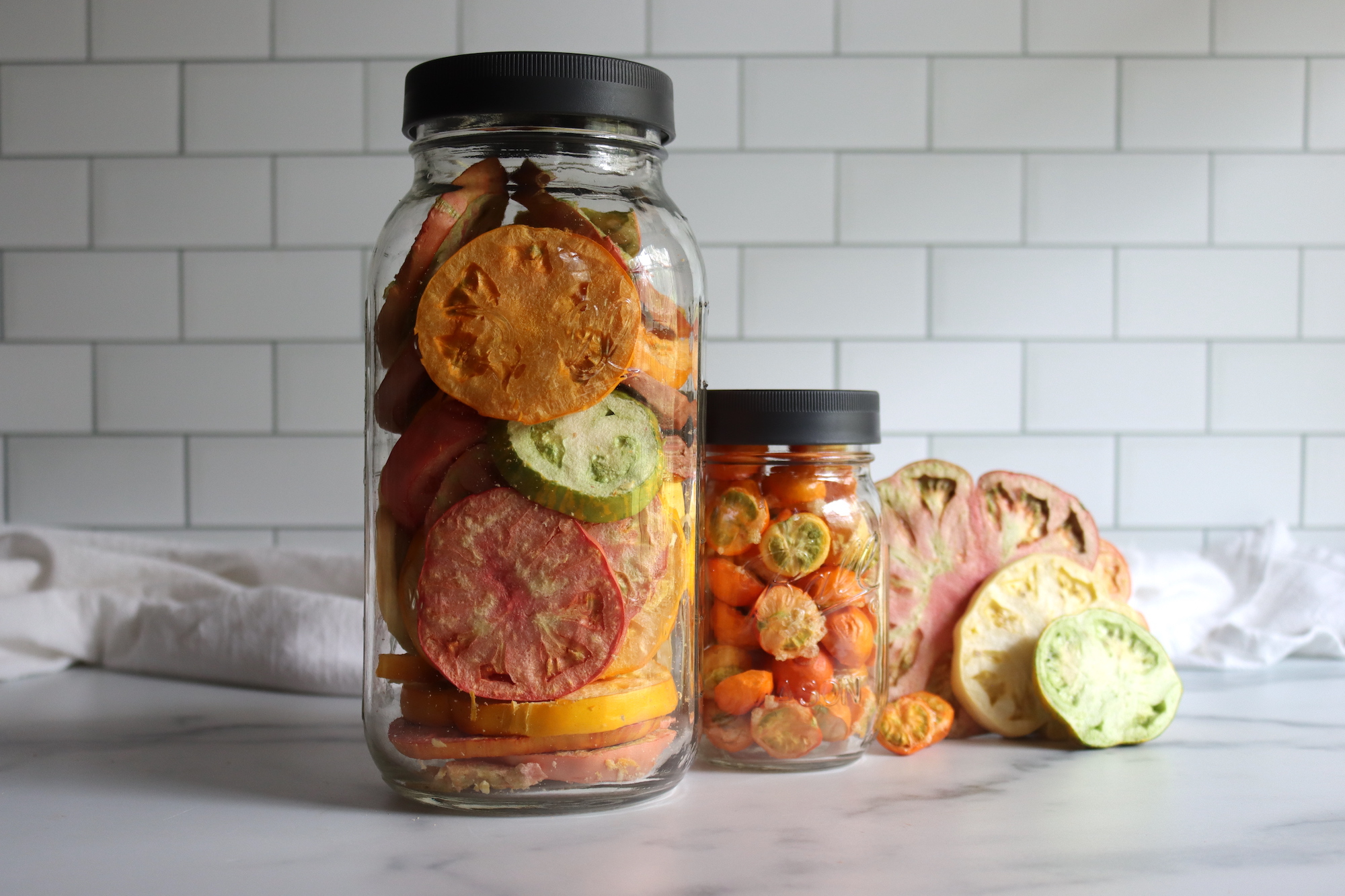
Ways to Use Freeze Dried Tomatoes
You can toss freeze-dried tomatoes directly into soups, stews and chili as you’re making them. The liquid from these dishes will quickly be absorbed by your tomatoes. For some tasty ideas consider a vegetarian butternut squash stew, French ratatouille or minestrone soup.
Slip crunchy freeze-dried tomatoes directly into sandwiches for some crispy tomato-flavored crunch. Some also choose to season their tomato slices before freeze-drying so they can eat them like chips!
You can also make tomato sauce from freeze-dried tomatoes. Just pop a handful in your blender and add water. Allow to plump up and blend! Always start with small increments of water to begin with, increasing the amount until the desired consistency is achieved. Use tomato sauce in lasagna, manicotti or atop chicken parmesan. For something more exotic, try cooking eggs in tomato sauce to make a North African dish known as shakshuka.
Freeze-dried tomatoes can also be blended in tomato powder that easily converts to tomato sauce, tomato juice or tomato paste. To make tomato powder, simply pulverize freeze-dried tomatoes into a powder using a spice grinder, coffee grinder or food processor. Sprinkle this flavorful powder over eggs for breakfast or rice for dinner. It can be used in marinades and meat rubs as well.
Rehydrated tomatoes can also be used to top pizza and pasta. Saute reconstituted tomatoes with basil and serve them atop angel hair and shrimp for a delectable dinner.
You can even reconstitute freeze-dried tomatoes to make tomato jam! The opportunities are truly boundless!
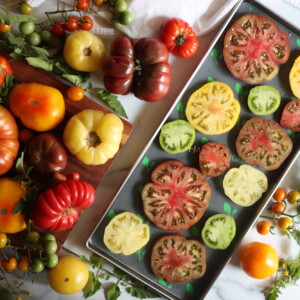
Freeze Dried Tomatoes
Ingredients
- Tomatoes, either fresh or pre-frozen
Instructions
- Turn on your freeze dryer and allow it to prechill for 30 minutes.
- Begin by washing tomatoes and removing their stems. Discard any tomatoes with rot.
- Pat tomatoes dry and slice into your desired shape. Large tomatoes can be sliced, quartered or diced. Smaller tomatoes can be halved.
- Line trays with parchment paper or silicone liners, if desired. Although optional, this will help with removal and cleanup later.
- Arrange your tomatoes on the trays in a single layer. If freeze-drying tomato puree, load the trays part of the way into the freeze dryer and pour the puree into them.
- Once the freeze dryer is pre-chilled, put the trays in and close the door. Press “continue.” (The cycle should take 20 to 24 hours to complete, but times can differ based on the size of your tomato pieces, the moisture content of your fruit and whether or not the tomatoes were fresh or pre-frozen.)
- Once the cycle is complete, remove a tray and check to see if your tomatoes have been completely dried. If they have not, you will need to add a few more hours to the drying time.
- When dry, remove the trays from the freeze dryer and set your freeze dryer to defrost.
- Immediately pack away the freeze-dried tomatoes. Tomatoes can be packed into mason jars for short-term storage. For long-term storage, seal in mylar bags with oxygen absorbers.
Notes
Storing
If placed in mason jars, freeze-dried tomatoes will maintain their quality for a year. Every time the jar is opened, however, moisture from the air will be introduced to the food and spoilage will quicken. For this reason, you may wish to store in smaller jars. For longer storage (30+ years), storing in mylar bags with oxygen absorbers is essential.Reconstituting
To reconstitute freeze-dried tomatoes, cover them with water and let them soak for 20 minutes. Drain off excess water and cook as usual. Refrigerate any unused portion.Freeze Drying Guides
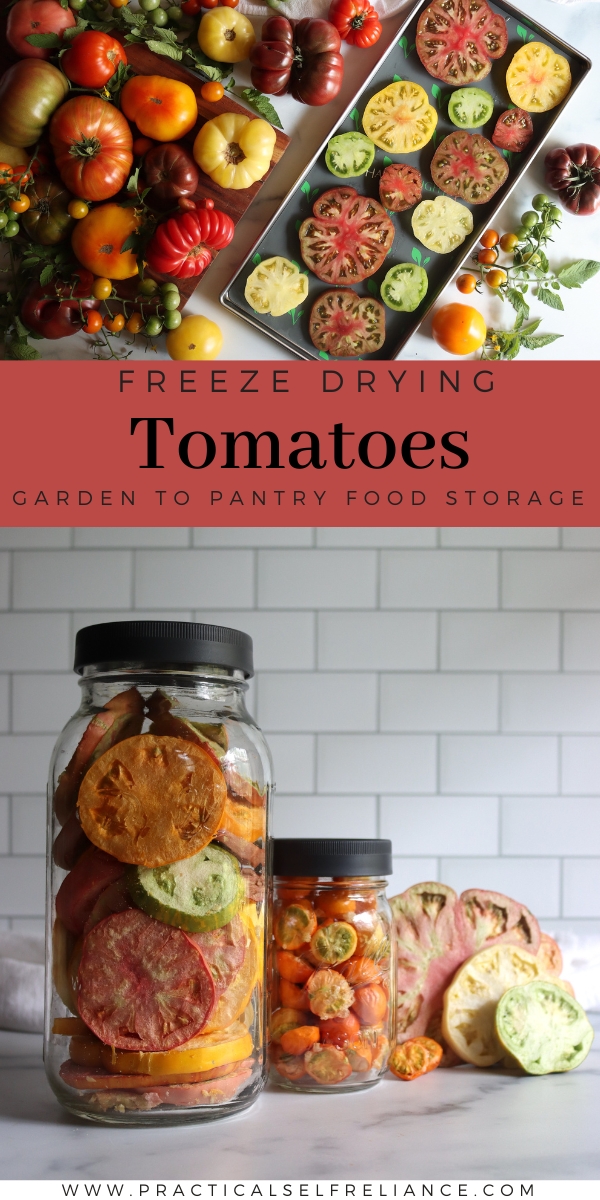
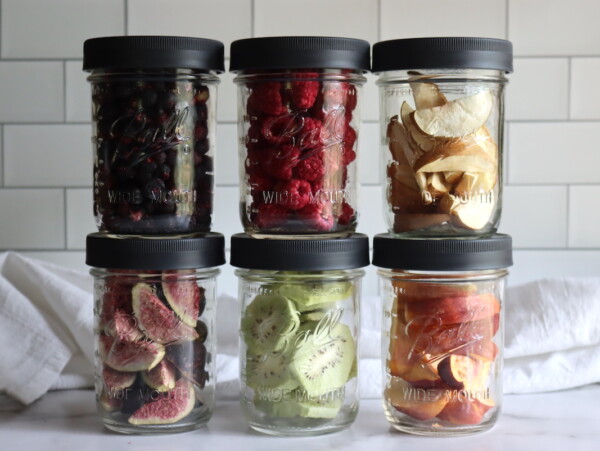
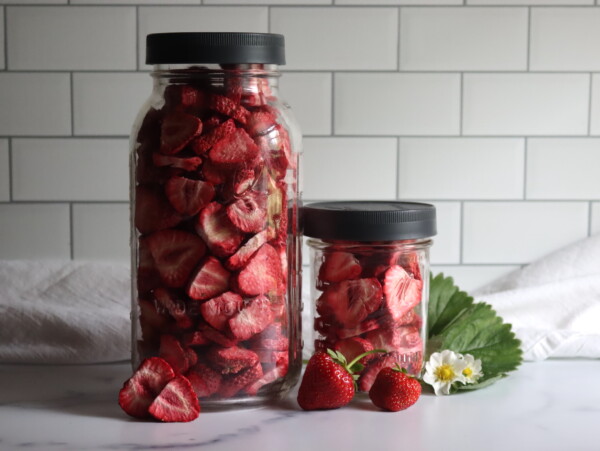
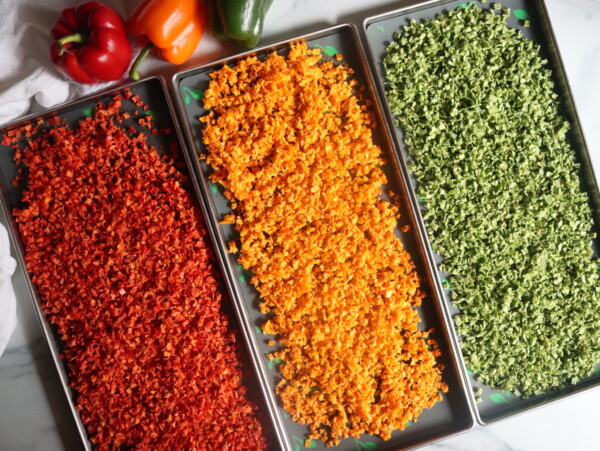
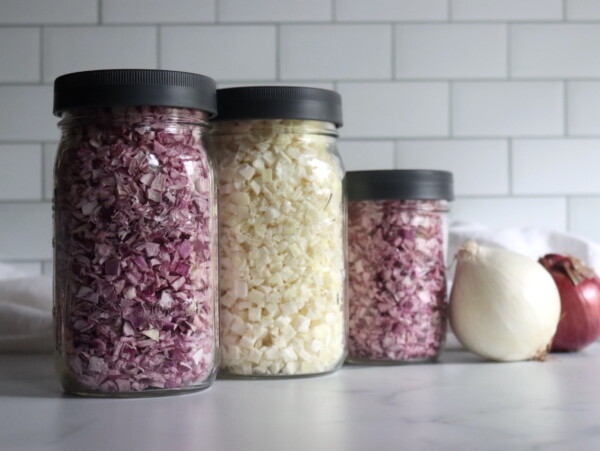
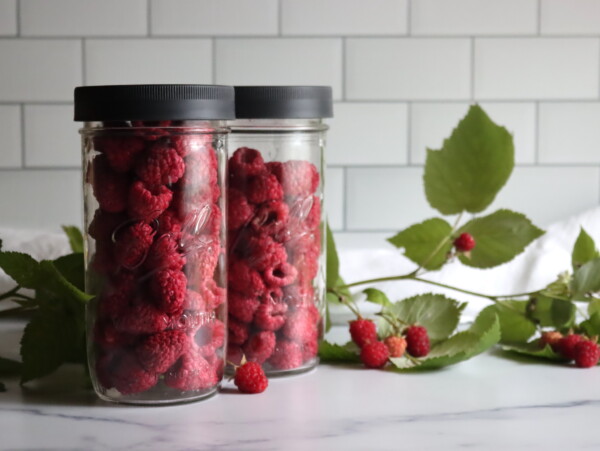
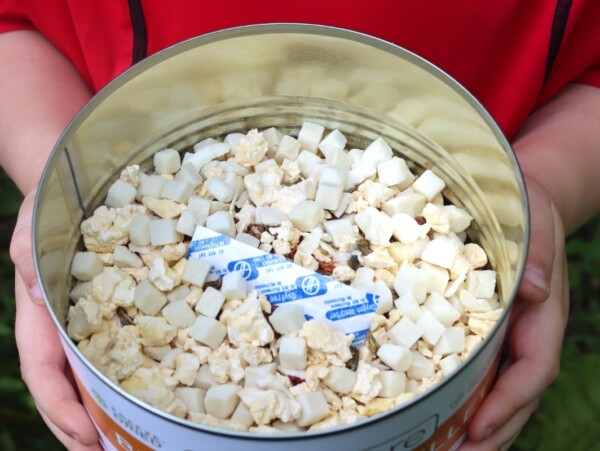

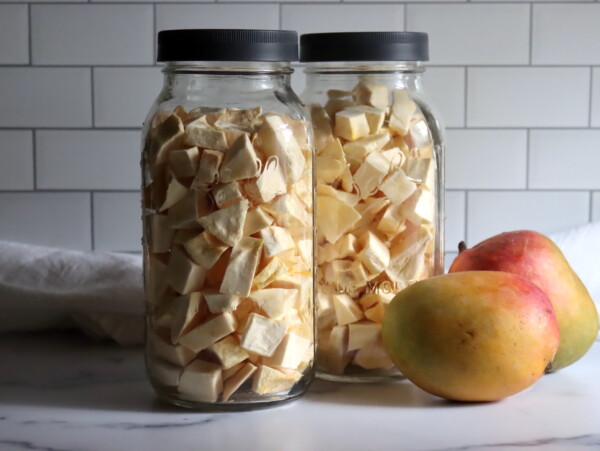










Ashley, you gave us the confidence to get a freeze dryer and we LOVE it! We are harvesting from our garden now here in the south but I wonder if you have recipes for soup or sauce making already developed.
Great, I’m so glad I could be helpful! I don’t have any recipes specific to freeze drying developed, mostly because you can freeze dry almost anything your family likes to eat. At this point, most of my recipe development is for canning since that’s so much more limited to what you can can safely. But still, any of my soup or sauce recipes from my canning site (CreativeCanning.com) would work well in a freeze dryer.